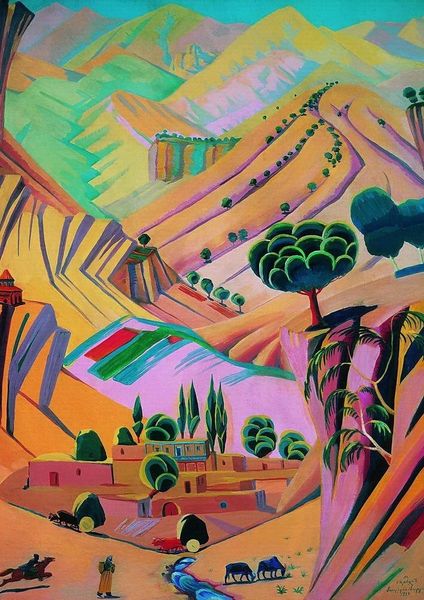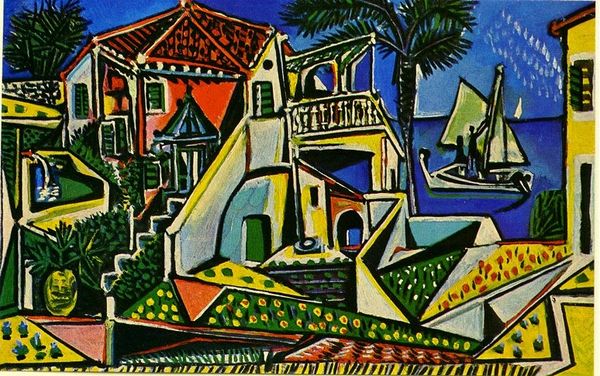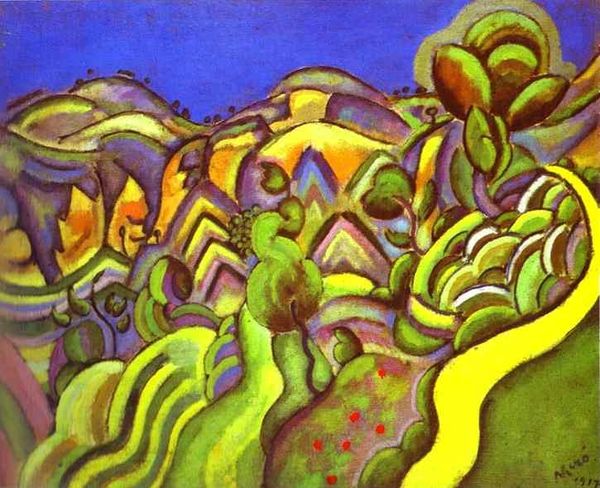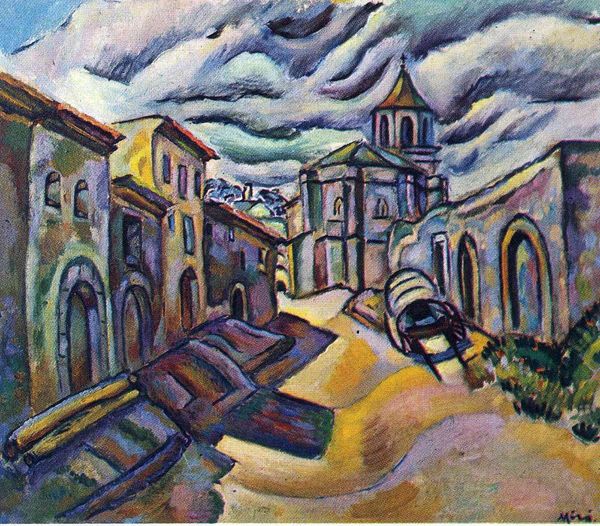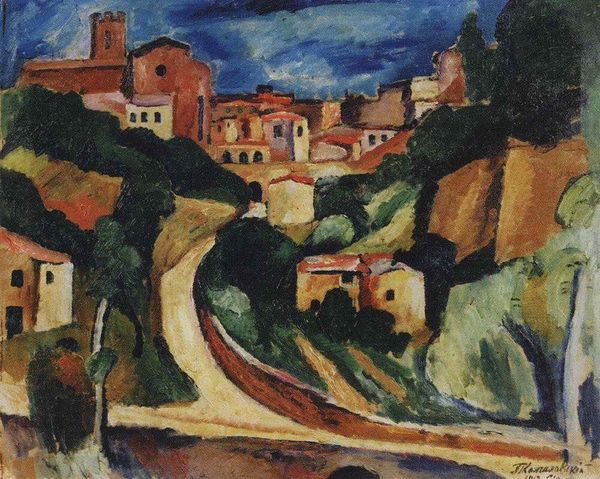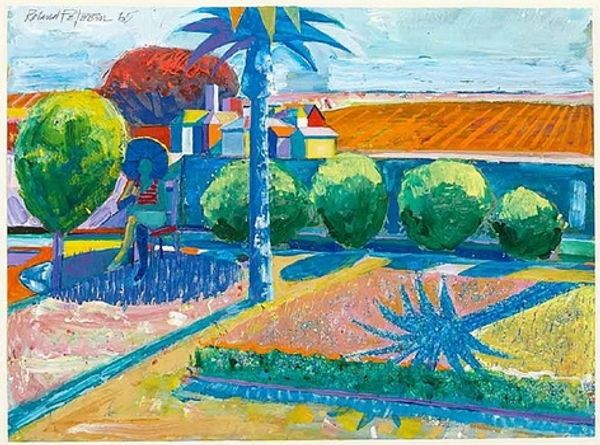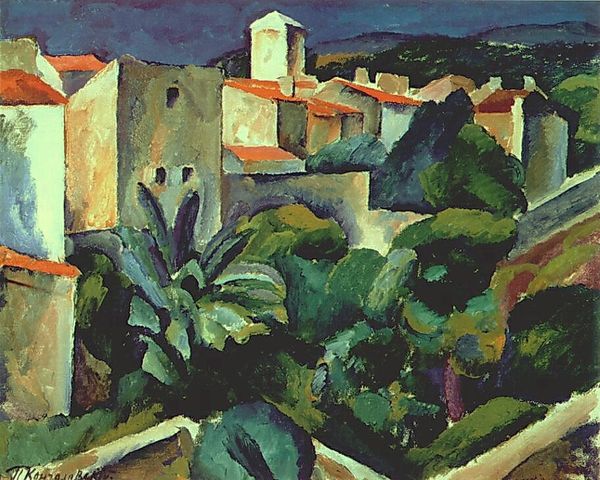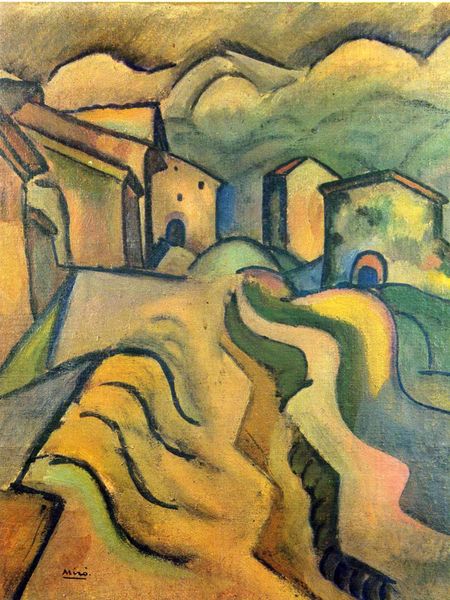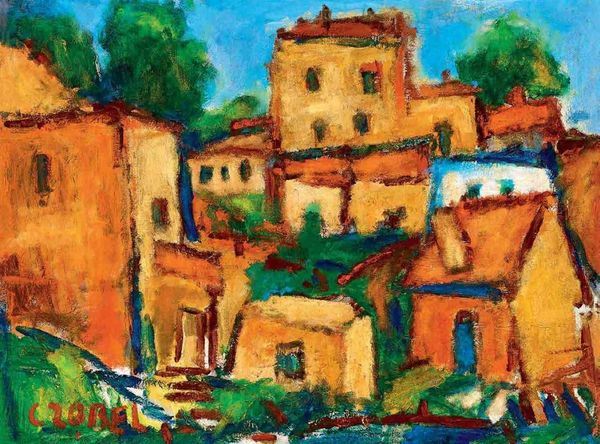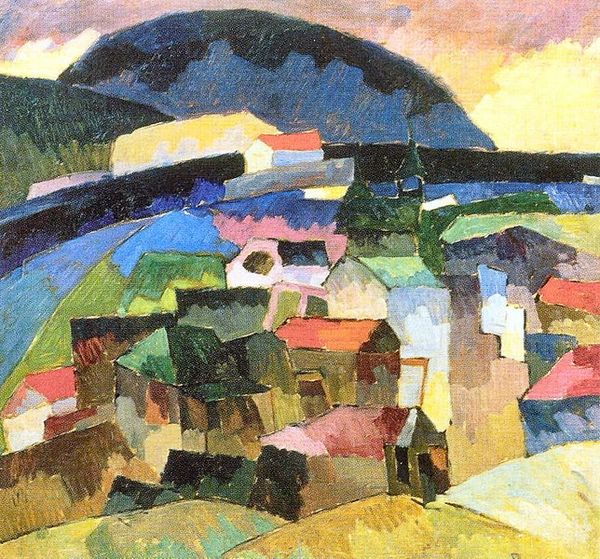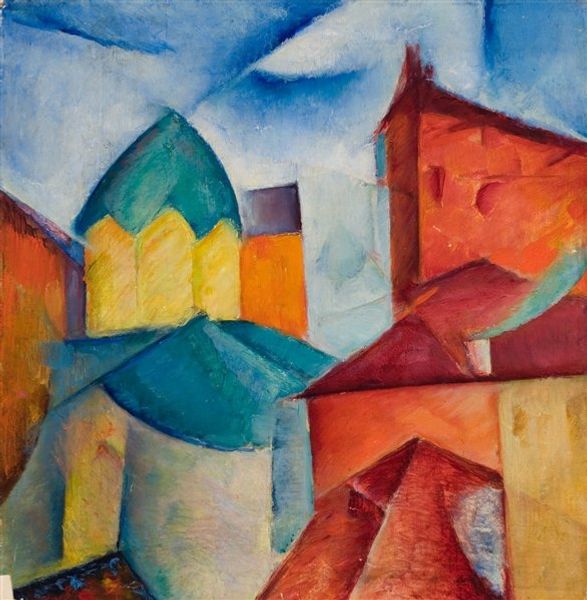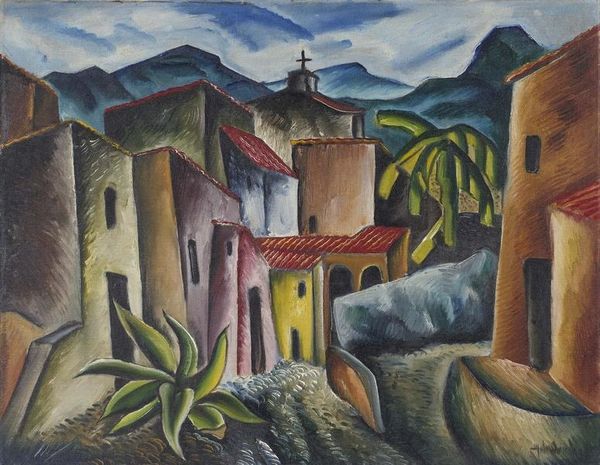
Dimensions: 65 x 72.5 cm
Copyright: Public domain US
Editor: So this is Joan Miró’s "Prades, the Village," painted in 1917. The landscape is so vibrant, with these intense colors laid on thick. It feels like Miró is exaggerating reality, but I’m not sure to what end. What's your take on it? Curator: I think the intensity stems from Miró grappling with the shifting artistic landscape of his time. In 1917, World War I raged, impacting artistic production. Think about it: what role does painting a village scene play against the backdrop of such devastation? Editor: Is it a kind of escapism, a retreat into simpler things? Curator: It could be seen that way. However, the avant-garde movements were also emerging. Cubism and Fauvism are both evident. The geometric forms nod to Cubism's fragmentation of space, while the non-naturalistic colors reflect Fauvism's emphasis on emotional expression. The tension between representing reality and breaking from it speaks to the broader struggle many artists faced. Is Miró commenting on the societal role of painting itself during wartime? Editor: That’s fascinating! So it's not just a pretty picture, it's a statement about the role of art during social upheaval? Curator: Precisely. The vibrant colors and abstracted forms might be his way of questioning traditional representations and exploring new visual languages to engage with a drastically changing world. This village becomes a space for negotiation and artistic identity. Editor: I never thought of it that way. Seeing the painting as a reflection of both the war and the avant-garde movements really changes how I understand Miró's choice of style. Curator: Exactly! The context reveals layers of meaning you might miss at first glance. It allows you to think more critically about not just the artwork, but the environment that shaped its creation.
Comments
No comments
Be the first to comment and join the conversation on the ultimate creative platform.
